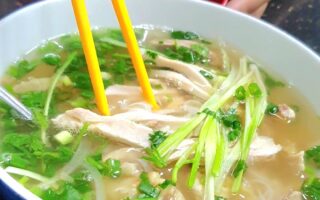Handmade Plant-based Easter Eggs is doable!
I was toying with this idea for months now, making Easter eggs that are plant-based. I can make moon cakes for the Moon Cake Festival. I have tried a few times. My first attempt some years ago resulted in an unbalanced cake that could not stand upright. That was my misadventure to the moon . After that, I gave up trying.
Then, I invited some of my friends over for a moon cake celebration or we call it Mid-Autumn Festival. I decided to take the easy route and made the moon cake skin with short crust pastry. It was dead easy and it tasted better than the proper shop bought ones. Click here to read more.
So my idea of plant-based Easter Eggs is based on the moon cakes. I figure that if I can use the same or similar fillings, then I am good.
The Easter Eggs that I make today has a short-crust pastry. I use natural food colouring and plant-based fillings.
My plan is
Purple colour:
Pastry – red cabbage
Filling – taro ( this is a root vegetable commonly used in Asian or rather, Oriental, cuisine in savoury and sweet dishes). Taro has purple veins in the root, so is usually used as purple colour. However, Ube or Ubi ( which is the Tagalog/Malay word for sweet potato), the purple sweet potato, has a deeper purple colour.
Pink/red colour:
Pastry – raspberries
Filling – coconut
Orange – colour:
Pastry – carrot
Filling – butter beans
The recipe is very long as it involve cooking 3 types of the fillings. Other than that, it is rather simple. I made a big batch of short crust pastry and divide it by 4 and colour the 3 portions with the 3 colours and leave one portion neutral. This is so that I can, towards the end, after making the solid coloured ones, make rainbow or unicorn colour.
Plant-based Easter Eggs
Pastry
450g plain flour
150g vegetable shortening
½ tsp salt
Food colours (see below)
Method
Place the ingredients in mixer stand and with a k-beater, mix the ingredients until it looks like bread crumbs. Divide the pastry mix into 4 equal portions. Set aside.
Food colouring for the colours
How to prepare the colours
Purple
Chop a few leaves of red cabbage. Boil the cabbage in about 150ml of water for about 5 to 10 minutes until the colour seeps into the water. Remove from fire, and strain and keep the water. Discard the cabbage.
Orange
Chop a medium carrot and boil in about 150ml of water until cooked. Set aside to cool. Tip the carrots onto a blender and whizz it. Strain the juice and set aside.
Pink
Crush half a punnet of raspberries, about 2 tbsps. over a sieve. Add a few spoonful of water to loosen it. Make about 150ml of the juice. Set aside.
Make the pastry.
Take one portion of the pastry mix and add in the coloured water/juice to the mixture. Stir with a fork. Add more if necessary, to ensure all the mixture is clumped together. Check using your fingers that the mixture is soft. Then gather the mixture together and lightly kneed it, until you get a smooth mixture. Wrap with cling film and keep in the fridge.
Repeat for the other 2 colours and leave one portion uncoloured. Use water for the uncoloured pastry.

Prepare the filllings
Filling:
Purple
300g frozen taro.
50g granulated sugar
1 tbsp oil
A splash of water
¼ tsp salt
Method:
Defrost, chop and steam the taro until cooked, ie, a fork can prick through it. About 25 to 30 minutes. Cool and mash it.
Put the taro in pan. Add in all the ingredients and cook over medium heat. Stir until it can form a ball. You may add a splash of water to it initially if the mixture is too dry.
Set aside to cool.

Beige
1 can 400g butter beans, drained and mashed
50g sugar
½ tb cooking oil
50g sugar
A pinch of salt.
Method:
Put all the ingredients together in a pan and cook over medium heat. Add a few tablespoon of water if it is too dry. Cook until it can form a ball.
Set aside to cool.
White
100g dessicated coconut
250ml water
50g sugar
¼ tsp fennel seeds
2 tbs tapioca flour + 2 tbsp. water
Method:
Put all the ingredients in a pan and cook until dry and the coconut clumps together Add the fennel seeds and cook for a few minutes. Mix the tapioca flour with the water and pour over the coconut mixture. Stir until the coconut comes to a big lump/clumps.
Remove and cool.
Lotus paste for the yolk.
I use shop bought lotus paste.
1 400g pack ready made lotus paste.
Pinch 11g to 12 g of the lotus paste and roll into a ball. Make 24 balls and freeze the rest of the paste for later use. Leave the balls in the fridge while you make the rest of the filling.
For all the fillings:
Make 6 portions of the fillings, around 25g each. I used a small ice-cream scoop. Shape them into a ball with your hands pressing them together as you roll them. Set aside in the fridge for at least 20 minutes. You will have some remainder of the various colours. Just use them for the unicorn coloured eggs
Repeat with the other fillings.
Preparing the pastry for assembly.
Take a portion of the pastry. Pinch 6 pieces of each about 35 to 37g each. Roll up into a ball and set aside. The remainder of the pastry can be used to make unicorn Easter Eggs.
Repeat for all the coloured dough.
You will have some remainder of the coloured pastry. Set that aside. If you wish you can use this for a mix colour egg shell. Like unicorn colour.
The uncoloured dough is for combining with the different colours to make unicorn Easter Eggs. Alternatively, you may make 8 or so pieces of the pastry.

To assemble: the egg filling
Take a lotus paste ball and wrap the ball with the taro, making sure that the lotus paste stays as close to the centre as possible. Roll the fillings to get a ball. Set aside.
Repeat for all the fillings. Wrap with cling film and leave in the freezer for at least 15 minutes.

To assemble the eggs:
Remove the fillings from the freezer. Take a portion of the pastry and wrap a filling with it. Roll into a ball and then shape the ends so that it looks like and egg. Place on a baking tray lined with baking parchment. Repeat for the rest of the colours.

Bake in oven 170C for about 25 to 30 minutes.

Note:
I made 6 eggs of a colour each and I have extra pastry. I mix the different colours together and made more eggs out of it. I ended up with about 24 eggs.
If you cannot find lotus paste or if you are not bothered, then use the fillings you made, without the lotus paste. The lotus paste just gives the eggs ‘yolks’.


Conclusion:
It is a very time consuming exercise. It took me a whole day to make this. I even steamed the taro the night before. But I only got to do the rest in the afternoon.
This is what I find:
The most difficult filling to handle is the coconut as I use less sugar in making the filling. Sugar helps to make the filling stick together. We usually use coconut and palm sugar, which will make the coconut brown or dark. I changed that to using fennel just to be a bit different and so that the colours can show when one cuts the Easter eggs.
The butter beans should be white, but this can is a bit beige.
The taro filling is the tastiest. Perhaps it is because as Malaysian Chinese, we use taro in our cooking, both for sweet and savoury.
The whole exercise is long and a bit challenging. I also recall that I have previously, or earlier this year, made dragon balls into Easter Eggs and posted to my niece to try. The feedback was that one expects the fillings to be different when eggs are of different colours. This is reasonable. Hence this is the rationale of today’s baking!

The photo above is dragon ball and the pastry is Chinese flaky pastry.
I hope you like my experimenting. If you wish to have these eggs, do let me know so that I can make it in good time for Easter. I need 2 to 3 days to make it. It has been tiring, and I would certainly not have made this if this wasn’t my hobby.
So Now I have my HEN-MADE plant-based Easter Eggs.
Please like and share this post in social media if you think it is worth sharing. Just remember to link it to my site instead of cut and paste.
If you think I need a breather and put my feet up a bit after this, and that you value my effort, do feel free to buy me a coffee.














